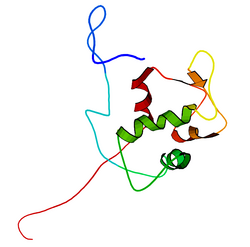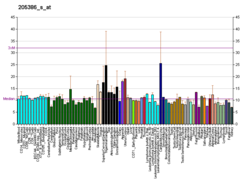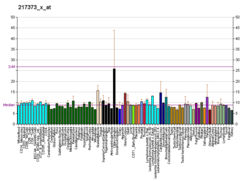Mdm2


Cet article ne cite pas suffisamment ses sources ().
Si vous disposez d'ouvrages ou d'articles de référence ou si vous connaissez des sites web de qualité traitant du thème abordé ici, merci de compléter l'article en donnant les références utiles à sa vérifiabilité et en les liant à la section « Notes et références ».
En pratique : Quelles sources sont attendues ? Comment ajouter mes sources ?
| MDM2 | |||||||||||||||||||||||||||||||||||||||||||||||||||
|---|---|---|---|---|---|---|---|---|---|---|---|---|---|---|---|---|---|---|---|---|---|---|---|---|---|---|---|---|---|---|---|---|---|---|---|---|---|---|---|---|---|---|---|---|---|---|---|---|---|---|---|
 | |||||||||||||||||||||||||||||||||||||||||||||||||||
| |||||||||||||||||||||||||||||||||||||||||||||||||||
| Identifiants | |||||||||||||||||||||||||||||||||||||||||||||||||||
| Aliases | MDM2 | ||||||||||||||||||||||||||||||||||||||||||||||||||
| IDs externes | OMIM: 164785 MGI: 96952 HomoloGene: 1793 GeneCards: MDM2 | ||||||||||||||||||||||||||||||||||||||||||||||||||
| |||||||||||||||||||||||||||||||||||||||||||||||||||
| |||||||||||||||||||||||||||||||||||||||||||||||||||
| |||||||||||||||||||||||||||||||||||||||||||||||||||
| |||||||||||||||||||||||||||||||||||||||||||||||||||
| |||||||||||||||||||||||||||||||||||||||||||||||||||
| Wikidata | |||||||||||||||||||||||||||||||||||||||||||||||||||
| |||||||||||||||||||||||||||||||||||||||||||||||||||
Le Mdm2[5] (pour « murine double minute 2 » est l'E3 ubiquitine ligase responsable de la régulation négative de p53. Son gène est le MDM2 situé sur le chromosome 12 humain est un oncogène.
C'est une protéine qui est retrouvée chez l'humain. Elle va ubiquitiniler la protéine p53 (gardienne du génome) et ce faisant, p53 sera dégradé par le complexe du protéasome sans exercer son effet. Une mutation amplificatrice de MDM2 inactive complètement p53 donc les dégâts de l'ADN n'entraineront plus de réparation cellulaire ou d'apoptose ce qui va donner naissance à un cancer.
Voir aussi
- MDM4, protéine de rôle proche
- Chromosome minuscule double
Notes et références
- ↑ a b et c GRCh38: Ensembl release 89: ENSG00000135679 - Ensembl, May 2017
- ↑ a b et c GRCm38: Ensembl release 89: ENSMUSG00000020184 - Ensembl, May 2017
- ↑ « Publications PubMed pour l'Homme », sur National Center for Biotechnology Information, U.S. National Library of Medicine
- ↑ « Publications PubMed pour la Souris », sur National Center for Biotechnology Information, U.S. National Library of Medicine
- ↑ Institut Curie, « MDM2 s’émancipe de la p53 »
 Portail de la biologie cellulaire et moléculaire
Portail de la biologie cellulaire et moléculaire


















